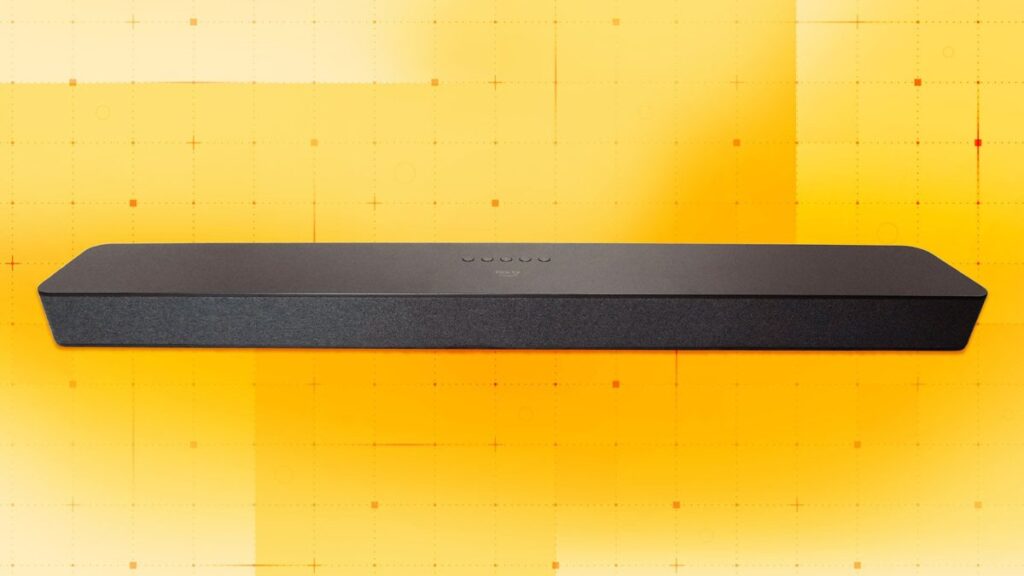
Amazon has unveiled its latest audio offering, the Fire TV Soundbar Plus, priced at $249.99. This new model marks a significant improvement over its predecessor, the base Fire TV Soundbar, which retails for $119.99. The Fire TV Soundbar Plus boasts a 3.1-channel configuration, delivering a more robust and clearer sound experience. Although it lacks substantial bass on its own, it can be paired with a powerful subwoofer for $374.99 or a comprehensive 5.1-channel setup with additional rear surrounds for $489.99. However, the competition remains fierce, as the LG S70TY offers superior audio quality and an upward-firing height channel for $349.99, maintaining its status as an Editors’ Choice for midrange soundbars.
The announcement comes as Amazon continues to expand its footprint in the home entertainment sector. The Fire TV Soundbar Plus is designed to cater to consumers seeking an enhanced audio experience without breaking the bank. Yet, the market is replete with alternatives that offer varying degrees of performance and features.
Design and Build: Basic Yet Functional
The Fire TV Soundbar Plus is notably larger than its predecessor, measuring 37 by 5.2 by 2.5 inches (LWH), which is over a foot longer than the original Fire TV Soundbar. Its all-black design features a grille cloth that spans the front and sides, covering the three full-range driver/tweeter pairs and two woofers. The top panel is equipped with small, circular buttons for essential controls such as Power, Input, Bluetooth Pairing, and Volume. A large recess on the back houses connectors for HDMI eARC, optical audio input, USB-A, and the power cable. For those preferring a wall-mounted setup, metal brackets are included.
The remote control is a compact black rectangle with rubber membrane buttons, offering standard controls and additional features such as EQ mode cycling and surround sound effect toggling. Users must rely on voice prompts for adjustments, as there is no on-screen interface, with volume levels indicated by a row of LEDs behind the front grille.
Features: Misleading Name, Standard Functionality
Despite its name, the Fire TV Soundbar Plus does not run Fire TV, unlike the Roku Streambar, which combines soundbar and media streamer functionalities. This soundbar lacks an on-screen interface and does not integrate with the Fire TV smart platform. It is compatible with any TV featuring HDMI ARC or eARC, or an optical audio output.
The Fire TV Soundbar Plus is a 3.1-channel soundbar with an integrated subwoofer. The subwoofer bundle enhances the bass experience, while the addition of rear surrounds creates a 5.1-channel system. Although it supports Dolby Atmos spatial audio, the absence of height channels limits its ability to fully exploit this feature. In comparison, the LG S70TY offers a 3.1.1-channel configuration with an upward-firing driver, providing better spatial audio capabilities.
Performance: Adequate Surround Sound Experience
In testing, the Fire TV Soundbar Plus demonstrated its strengths and limitations. Without the subwoofer, the soundbar struggles with lower frequencies. On bass-heavy tracks like The Knife’s “Silent Shout,” the sound lacks depth but remains distortion-free at high volumes. The addition of the subwoofer significantly enhances the bass, delivering palpable sub-bass vibrations.
When playing Yes’ “Roundabout,” the soundbar alone offers a full and balanced sound, with strong resonance in the acoustic guitar plucks. However, higher frequencies can sound slightly brittle. The subwoofer rounds out the lower frequencies without introducing unnatural rumble.
In cinematic tests, such as the opening chase scene in “Doctor Strange in the Multiverse of Madness,” the soundbar delivers clear audio from low-mids to highs, though it lacks the rumble of loud smashes. The subwoofer and rear satellites expand the sound field, creating a more immersive experience, albeit without the directional precision of systems with height channels.
Market Position and Future Prospects
The Fire TV Soundbar Plus enters a competitive market where consumers have numerous options. While it offers a notable improvement over its predecessor, it faces stiff competition from models like the LG S70TY, which provides better spatial audio for a similar price point. The absence of Fire TV integration may also deter potential buyers seeking a more comprehensive media experience.
Looking forward, Amazon may need to innovate further to capture a larger share of the home audio market. Integrating more advanced features and enhancing compatibility with its existing ecosystem could be key strategies. As consumer expectations continue to rise, the challenge for Amazon will be to balance affordability with performance and functionality.







